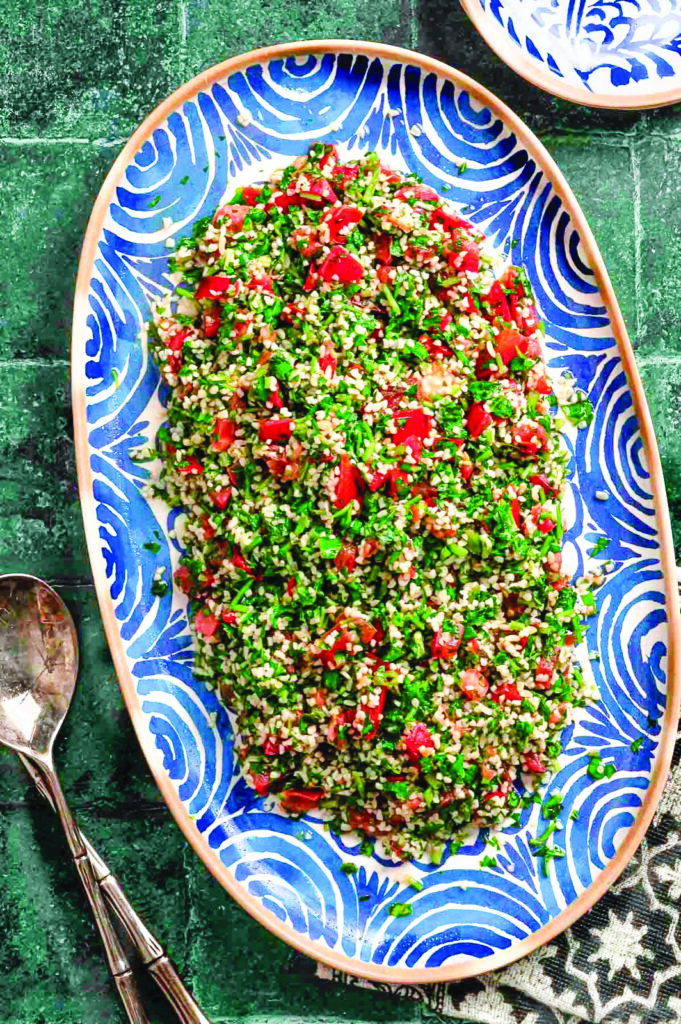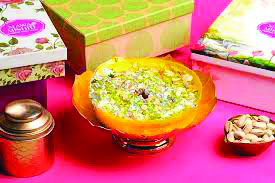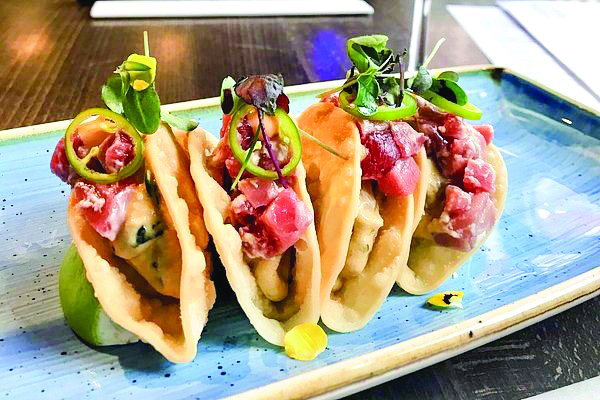In recent times, both chefs and homecooks have embraced global flavors and experimented combining traditional cooking methods and ingredients with global ingredients and cooking techniques. Such a fusion is representative of the evolving food culture where Rajasthan’s rich culinary heritage meets modern tastes, thereby creating a buzz on global food platforms.
The popularity of global cuisines and fusion food in India has also strengthened and paved a way for regional ingredients and cuisines like Rajasthani food to have a wider reach today. Dishes like Gatte Tacos or Jowar Tabbouleh, where traditional elements are incorporated into global forms of food, reflect the growing food culture in the region. As food trends evolve, there’s also a growing demand for healthier and more sustainable eating practices. Rajasthan is inherently rich in produce like bajra and jowar, which are highly nutritious and cater to the current trends of gluten free, health-conscious, and sustainable eating. The seasonal produce is naturally meeting the body’s requirements, providing exactly what is needed for a healthier lifestyle.
Even when we talk about sweets and desserts, the local produce, which generally not everybody is keen on exploring, is glorified when put to use differently. Use of flours like buckwheat, amaranth, millets, etc. is gaining popularity in desserts. Using traditional sweets like misri mawa and ghewar and creating fusions like misri mawa tart and cheesecake ghewar are prime examples of combining traditional heritage with a global palate.

The cuisine of Rajasthan is known for its bold flavors, rich textures, and generous use of spices and ghee (clarified butter). The ingredients used in Rajasthani cooking are heavily influenced by the region’s climate, which is hot and dry. The lack of water in the desert areas led to the use of dried and preserved foods that could be used throughout the year. Because of the harsh weather, food in Rajasthan is often hearty and rich to provide energy and keep people warm and nourished.

A typical Rajasthani meal is heavy on pulses, grains, and dairy products. The use of spices like cumin, coriander, red chili, and garam masala is common, giving Rajasthani food its signature punch. Many dishes are cooked using ghee, which not only enhances the flavor but also provides much-needed calories in the desert heat.
Iconic Dishes of Rajasthan
Some dishes are synonymous with Rajasthani cuisine and are loved across the world for their unique flavors and textures.
Regional Variations in Rajasthani Cuisine
Rajasthan is a large state, and the food culture varies significantly across different regions. Each region has its own take on traditional dishes, with unique ingredients and cooking styles. Here are some of the key regional variations:
Marwari Cuisine: Marwar, which includes cities like Jodhpur and Jaisalmer, is known for its bold and spicy flavors. The food here often features dried and preserved ingredients, such as Gatte ki Subzi and Bajra Khichdi. These dishes are made with locally available ingredients that thrive in the desert climate, and the use of ghee and spices is generous.
Mewari Cuisine: The Mewar region, which includes Udaipur and Nathdwara, has a more royal culinary tradition, heavily influenced by the Rajput rulers. The food here uses a lot of dairy products like yogurt and milk, and dishes are often richer and more refined. Mewari food tends to be milder compared to the bold, spicy dishes of Marwar, with a focus on delicate flavors.

Shekhawati Cuisine: The Shekhawati region, including towns like Sikar and Jhunjhunu, has a simpler and practical approach to food. The dishes in this area are known for being flavorful despite limited ingredients. Food here often reflects the lifestyle of the people, with dishes that are quick to prepare and easy to digest.
Dhundhari Cuisine: In Dhundhari, which includes Jaipur and Alwar, the cuisine is diverse and includes a wide range of flavors. This region celebrates the use of yogurt, ghee, and seasonal produce. The food is rich and indulgent, and the cooking methods take advantage of the fresh ingredients available throughout the year.Seasonal Foods and Eating Patterns
Rajasthani cuisine is deeply tied to the seasons, with different dishes prepared depending on the time of year. The state’s extreme climate plays a major role in the types of foods people eat.

Summer Foods: Summers in Rajasthan are extremely hot, so people prefer foods that are light and refreshing. Seasonal fruits like melons, cucumbers, and oranges are commonly eaten, as they have high water content and help to stay hydrated. People also consume more cool beverages like buttermilk, lassi (a yogurt drink), and lemonade to combat the heat. Salads and cold soups are popular, providing hydration without being too heavy.Winter Foods: In winter, the food in Rajasthan becomes much richer and more indulgent. The cooler temperatures make it the perfect time for hearty, warming dishes that provide energy and sustenance. The use of ghee becomes even more prominent in the winter months, as it provides warmth and comfort. Winter vegetables like cauliflower, spinach, and carrots are commonly used, and dishes like Gajar Methi ki Subzi (carrot and fenugreek) and Dal Baati Churma are favorites during this time.
The Fusion of Local and Global Flavors
In recent years, Rajasthan has seen an exciting shift in its food culture. While traditional dishes still hold a special place in the hearts of locals and tourists alike, there is also a growing trend of blending Rajasthani flavors with global cuisines. This fusion is creating new and exciting dishes that combine the bold spices and flavors of Rajasthan with international ingredients and cooking techniques.
For example, chefs in Rajasthan are experimenting with plant-based foods, using local vegetables and grains to create healthier versions of traditional dishes. Some are even combining Rajasthani food with global flavors like Mediterranean or Middle Eastern spices, creating a fusion that retains the essence of Rajasthan while offering something new and modern.
This fusion movement has allowed Rajasthani cuisine to stay relevant in the changing world of food while still celebrating its roots.
What makes Rajasthani food even more fascinating is how it’s evolving with time. While the essence of its traditional flavors remains intact, people are now blending them with modern trends, like fusion cooking and healthier ingredients. This mix of old and new has kept Rajasthani cuisine fresh and exciting.
From the arid desert landscapes to the grandeur of royal kitchens, the food of Rajasthan celebrates history, creativity, and resilience. It’s no wonder these flavors continue to charm food lovers across the globe, offering a delicious journey into the heart of the state.







